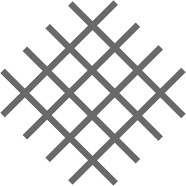Power, control and maneuverability are the variables that affect the choice of a tennis racket. All the world's tennis players are constantly searching for the ideal racket that meets the optimal combination of these three variables. This guide will show you how to read and interpret the technical features of tennis rackets and understand how these affect on the power, control and maneuverability, making your choice easier and fun.
It's the surface of the racket's oval, expressed in inches2 or in cm2. The Head Size affects the play style and the speed of the ball, and thus the power of the racquet. A wide impact zone produces more power than a smaller one. Generally a large rope plate offers more "sweetspot" (useful impact area) and reduces the risk of decentralized strikes. Advanced players, who are generally looking for greater control, prefer low-level rackets, while beginners find it enjoyable to have a wider surface.
It's the first value to consider, absolutely. The mechanism to be understood and remembered is the following: a lightweight racket produces a lot of power but little control, while a heavy racket offers much control and less power. For this reason, beginners will benefit in a rather light racket while a professional looking for maximum control will opt for a heavier chassis.
It's the distance in millimeters between the base of the racquet handle and its balance point. The Balance Point is an important value that gives us information on how weight is distributed along the tennis racket. In a standard 27-inch racket, a neutral balancing point is around 320 mm. Remember: a high-balance racquet (to the head, then over 320-330 mm) will provide greater push but less control, conversely a low-balance (towards the throat, so below 320 mm) will offer greater ball control but less power.

It's the value that indicates the number of vertical and horizontal ropes of our racket. The first value refers to the number of vertical rows and the second to the horizontal rows. A "dense" string scheme (for example, 18x20) offers a lot of control, on the contrary an "open" string scheme (for example, 16x18) generates a lot of power. The rope pattern also influences the spin ability, in fact in recent years the spread of tennis rackets with a very open string scheme (eg 16x15) has increased to meet the needs of tennis players who love the top spin.
Indicates the height of the racquet profile. A higher profile generates greater power, a lower profile provides greater control. Some rackets have a constant length profile and therefore we find only one value (eg 22 mm flat), while others have a variable profile along the length of the racket (eg 22-24-22). Those who use multiple rotations (both topspin and backspin) should avoid using high profiles: because of the reduced impact angles it would be easy to hit the chassis often.
Surely you are a little clear now and you can start your trip in the fantastic tennis world by choosing your new racket. Even if you want to become quickly in a champion, remember that learning is gradual in tennis and never forget to have fun: tennis in addition to being a sport is especially a game. Choose your racket according to your level of play and the goals you want to achieve. Be honest and objective with yourself, from the correct choice of the racket depends on the ease which you will improve your tennis.
Choose your racket Use Racket Finder
Customer Service
+39.0982.42162
Mon-Fri (9:00/18:00)
Email us
Send a Ticket
Mister Tennis Srl
(Capitale Soc. 200.000€ i.v.)
Registered office:
Via Filippo Turati, 40 - 20121 Milano MI - Italia
P.Iva IT 02880140781
REA: MI - 2734391
![]() © 2025 MisterTennis.com All Rights Reserved - Terms & Conditions - Privacy policy - Cookies
© 2025 MisterTennis.com All Rights Reserved - Terms & Conditions - Privacy policy - Cookies